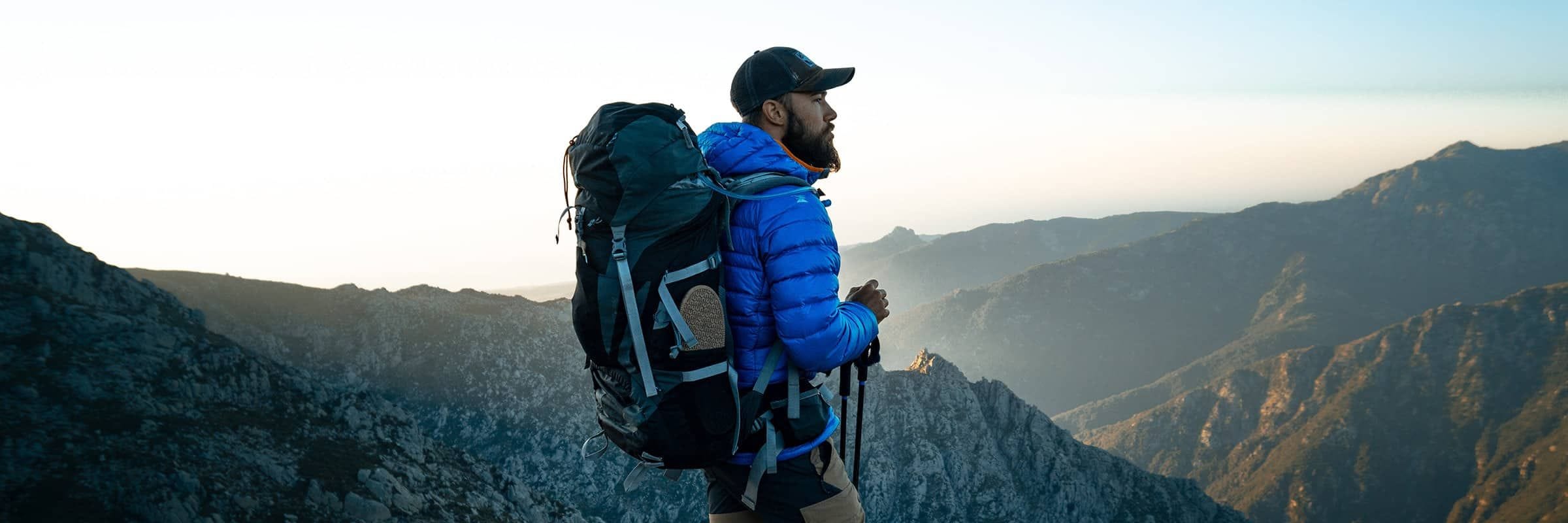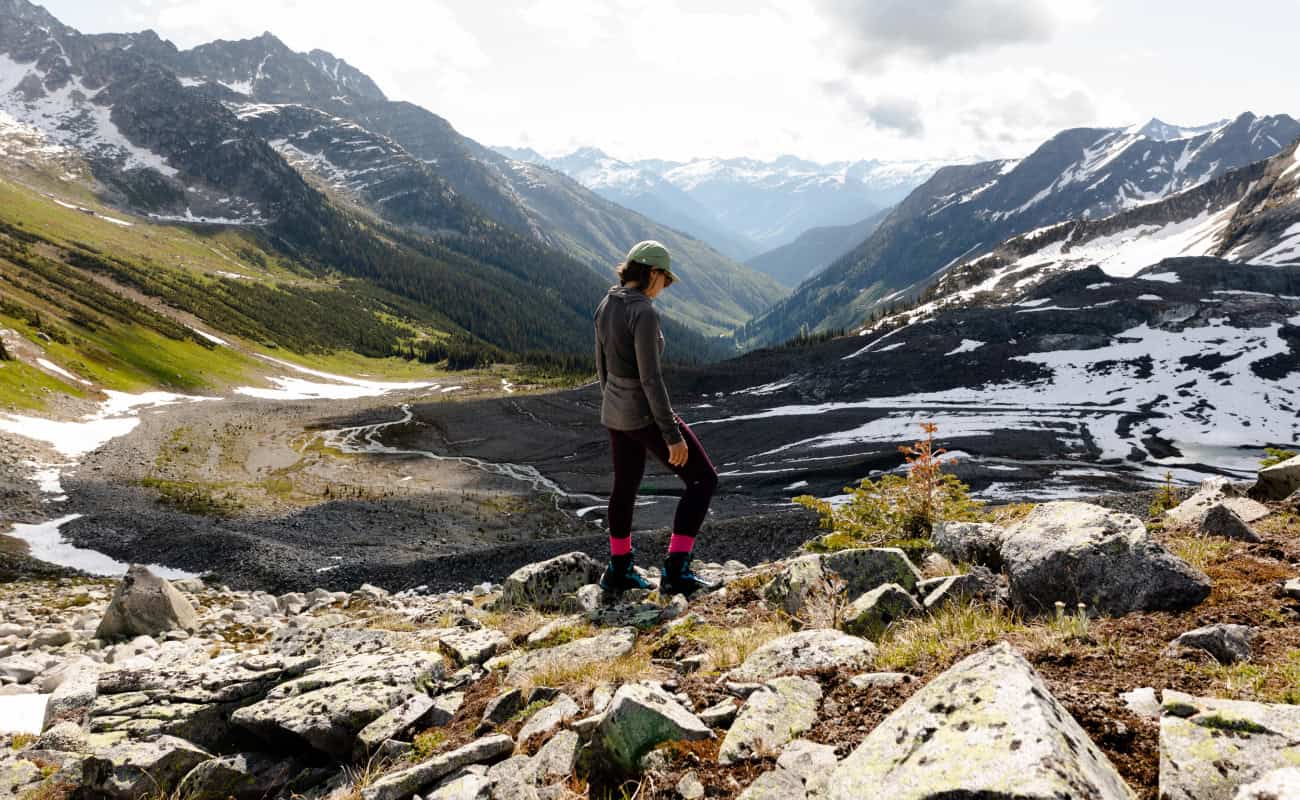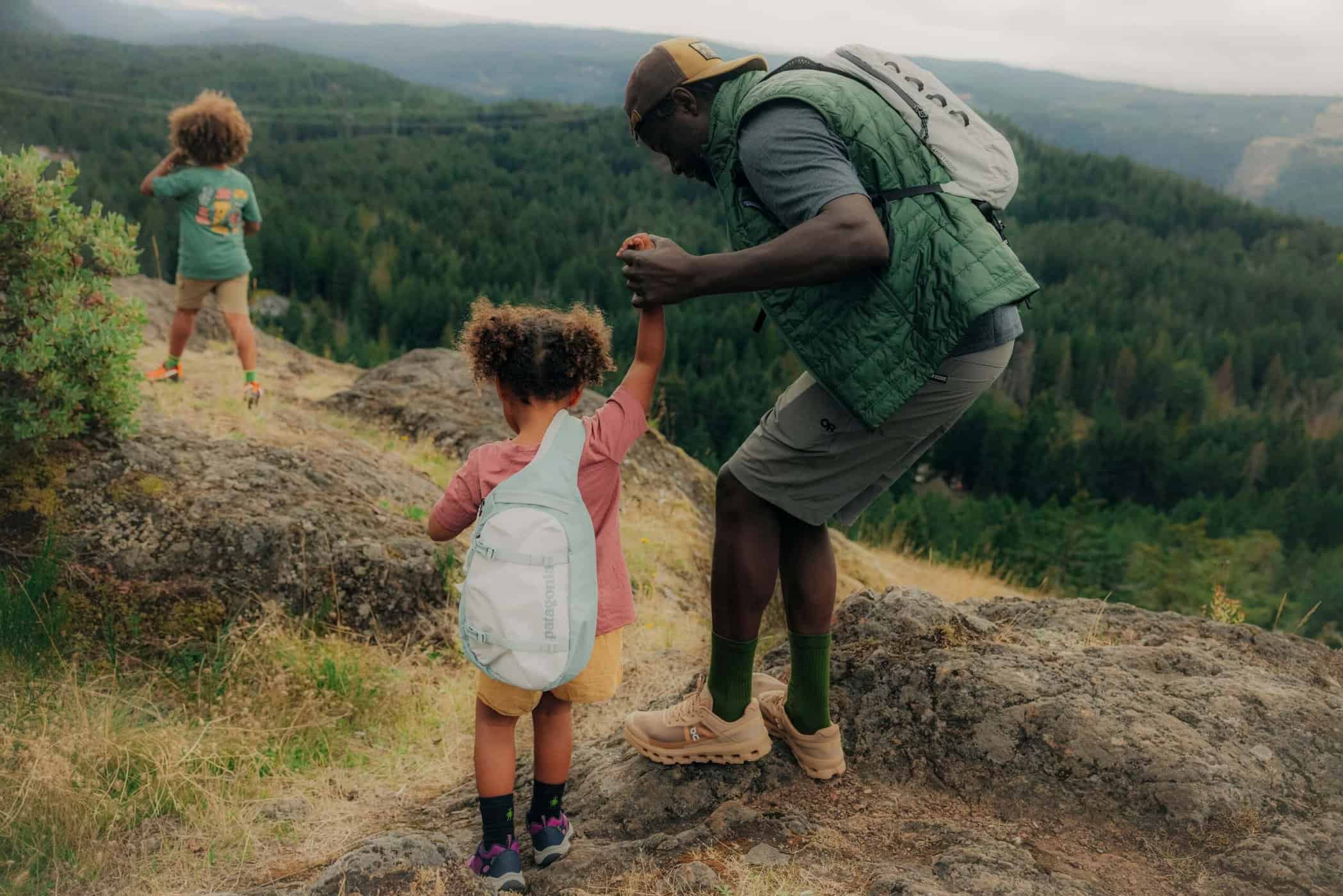Charlotte Davis, People & Culture Manager at Altitude Sports, recently completed this iconic thru-hike, spending 9 days and roughly 170 km around the massif spanning France, Italy, and Switzerland. But how did she sustain herself during this gruelling journey? Charlotte shared key meal planning advice, daily fuelling tips, personal insights, and favourite recipes with us. Having trekked many difficult trails, here’s what an expert hiker has to say.
Table of Contents
Why Is Planning Meals for Hiking So Important?
Proper nutrition is crucial for any successful hike. While you might focus on your gear, poles, boots, layers of clothing, first aid kits, and tech, it’s food and hydration that should be at the top of your checklist for any extended stay in the wilderness. Without proper meal management, your trip can get cut short.
Step 1: Evaluating Nutritional Needs Over Several Days
When planning what kind of sustenance to bring, consider logistical factors like weight and pack real estate, as well as preferential factors such as variety, to avoid meal boredom. Charlotte found this to be particularly true. She did her research and learned she could get away with fewer meals on Mont Blanc because of its popularity. She was never too far from some of the local restaurants that cater to the many hikers the mountain receives yearly.
If your destination is less likely to have a restaurant to fall back on, you’ll want to make sure you have enough meals to sustain you for the entire journey, so consider things like breakfasts, lunches, dinners, and snacks, as well as enough water not only to keep yourself hydrated but to cook some of those meals.
Step 2: Choosing the Right Meals
As mentioned in Step 1, weight and pack real estate are crucial factors. You’ll want to maximize the nutrition you can bring while minimizing the weight it’ll add to your bag. Every ounce counts when it comes to any backpacking sojourn to the mountains.
For Charlotte, this meant a lot of dehydrated meals. She also brought along easy meals such as oatmeal, pastas, and rice—all excellent choices for carbohydrates and they’re relatively light in weight. Don’t forget snacks! Things like candy, chocolate bars, crackers, and nuts are also great because of their high-fat content, providing sustained energy to keep you going throughout the day.
Charlotte’s Tip: Always prioritize cooking your heaviest things first, like your pastas. This way, your pack will get lighter as the days go by and also last the longest.
Avoid food waste by planning carefully. Charlotte’s solo trip taught her that bringing two-serving dehydrated food packets wasn’t ideal. There was too much food and scarce storage options. For solo travelers, single-portion packs are a better option if you can find it. Plus, the environment will thank you for minimizing your potential waste.
Step 3: Planning & Organizing Your Meals
Your dinners will be the bulk of your weight. This is the meal you should consider the most. After a long day of hiking, refueling with a good, balanced dinner is essential in addition to getting a good rest and proper hydration. Below, you’ll see what an average day of meals looked like for Charlotte during her 9-day trek.
Breakfast
- Oatmeal with freeze-dried fruits (varied from cranberries to blueberries)
- Instant coffee
Lunch
- Shelf-stable sausages and cheese
- Crackers
Midday Snacks
- High protein bars
- Nuts
- Fruits
- Candy
Dinner
- Dehydrated meals
- Pasta
Charlotte’s Tip: Don’t be scared to be creative with your meals. Eating oatmeal every day can lose its appeal. Not only can meal boredom lead to a sense of fatigue, but it could lead to a loss of appetite.
For storage in your pack, using resealable bags, compression bags, and other methods can help squeeze your meals in some nooks and crannies of your backpack. You can also keep a few snacks stored in the top pocket of your backpack for quick access to something to eat if you’re feeling peckish.
Charlotte’s Tip: Avoid bringing anything “chocolate-covered” since it could melt in your pack, making a mess of things. Avoid anything that can be crushed in your pack. It’s not worth risking a mess that you’ll waste energy having to clean later on.
When it comes to backpacking, making your meals is expected to be a little rough and ready. Charlotte kept her load lighter by avoiding bringing things like pots and pans, cups, or cutlery. The trick here is resourcefulness. Cook in one pot, eat from the same pot. Sporks are also a cutlery wonder. One burner, like the one Charlotte brought, can be all you need to make most of your meals. Once again: Every ounce matters.
Charlotte’s Tip: When cooking with water, if you aren’t sure how much to use, opt for less. Too much water can turn your meals into a soupy mess.
Charlotte’s Learnings
Even with restaurants at her disposal, mistakes weren’t without during her Tour du Mont Blanc trek. For instance, bringing too many rations of dehydrated meals. Certain foods are also messier. A can of tuna, while high in protein, can spill fish juice everywhere—take it from her.
Another caution she advises against is to be careful about high-salt foods. You’ll only make yourself feel thirsty, and a ready purified water source might not be available immediately on your trek.
Charlotte also recommends scoping the area out for grocery stores. Being able to buy some of your food over time saves on space, weight, and allows for more options in your meals. Variety is the spice of life!
Charlotte’s Favourite Dehydrated Flavours
- Pad Thai
- Indian curry
- Teryiaki Rice
Final Advice
Keeping fuelled throughout your long trek is essential. Charlotte’s main advice is: if you’re feeling hungry, you’ve waited too long.
Make sure to pack enough for all three of your main meals and snacks to keep energized during the day. If you are heading to more remote destinations, it could also be a good idea to bring a couple of extra days of food for emergencies. This could be for reasons anywhere from taking the wrong path, to unexpected delays, to helping a fellow hiker in need of some extra calories.
Don’t be shy to treat yourself either. Charlotte wasn’t shy on chocolate bars and avoided added costs from shelters that could range up to $100/night by opting to camp outside. The extra budget allowance let her take a break from her hikes to dine on local cuisine in all 3 countries! And don’t overthink things too much. Pack smart, but allow some leeway to let the path guide you through your adventure and see where it leads.
Recap
- Do your research: Survey the local area and trails to see what’s around. You might save yourself some space and weight.
- Bring enough for your whole trip, including a couple extra days for emergencies. The bulk of your weight will come from dinner meals—start with your heaviest meals first to lighten the load over time.
- Have a variety of meals ready, not just for taste but for nutrition. You need a healthy balance and sufficient calories to replenish those expended during the day. And stay hydrated!
- Don’t overthink it! Plan accordingly, but get creative with your meals or take a detour to dine out around town. Look for local treats, or bring some tasty favourites for yourself.
With the right meal planning and a bit of creativity, you can enjoy delicious and nutritious meals on your next long hike. So, pack smart, stay fuelled, and let the adventure begin!









